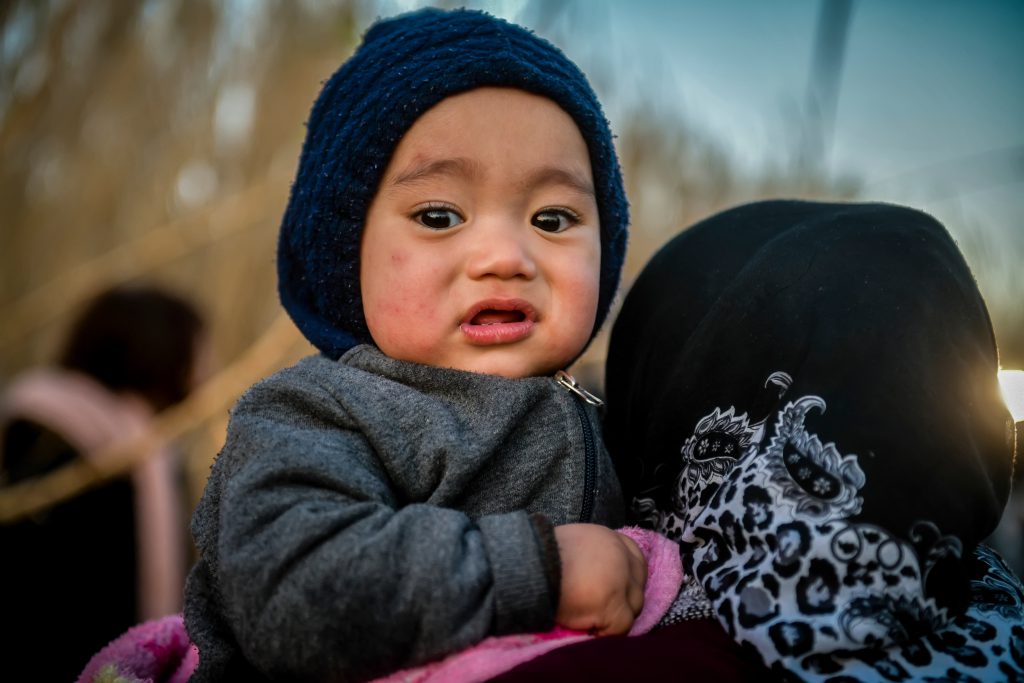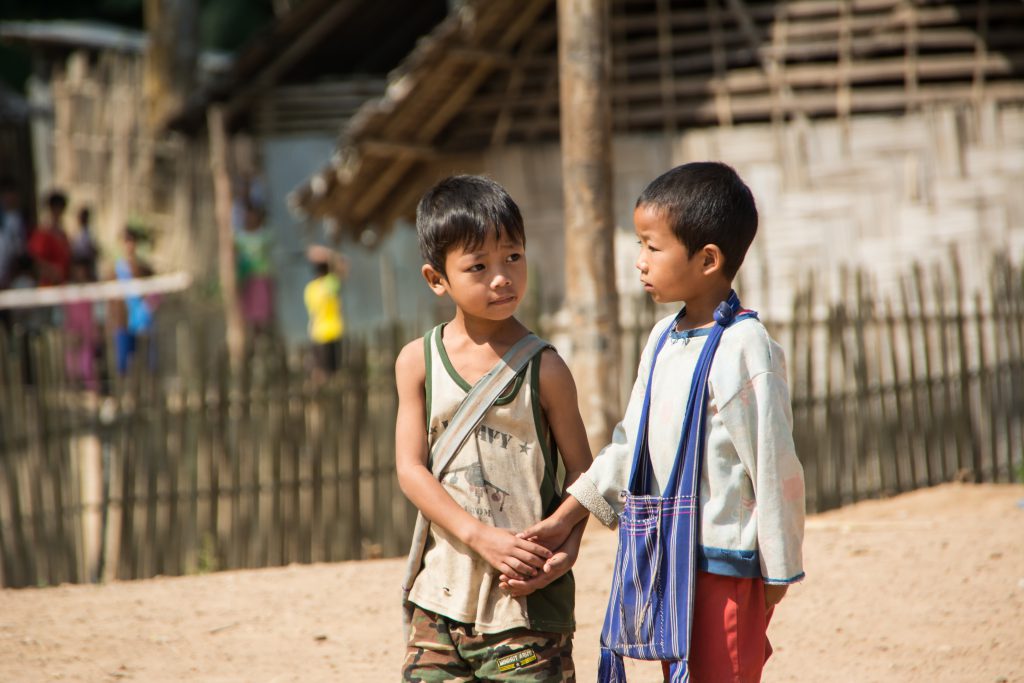Invisible. The first condition in which stateless children find themselves is that of invisibility. According to UNICEF data, 1 in 4 children under the age of 5 are not registered at birth. Even when they are, they may have no record of registration. Around 237 million children under the age of 5 worldwide currently do not have a birth certificate and are at risk of statelessness.

Who is a stateless child?
A stateless child (from the Greek a-polis “without a city”) is an individual who does not hold the citizenship of any state. The international legal definition of a stateless person is “a person who is not considered as a national by any State under the operation of its law” (UNHCR, 2021).
This definition implies that no state has the duty to protect this individual.
Statelessness does not depend on the choice or will of individuals and it can be distinguished into de jure statelessness and de facto statelessness. Indeed, one is stateless for one (or more) of the following reasons (UNHCR, 2021):
- When a child was born from stateless persons or if it is not possible to inherit the parents’ citizenship. For example, there are many stateless people in all the states that do not allow mothers to transmit their nationality to their children on an equal footing with their fathers (in case the fathers are unknown or dead;
- When a child is part of a social group that is denied citizenship on the basis of discrimination. In fact, the majority of the world’s known stateless populations belong to minority groups;
- When a child is a refugee as a result of war or military occupation;
- For bureaucratic reasons, if the state of which the child was a citizen has dissolved and given rise to new national entities or if the borders have changed, such as the USSR or Yugoslavia;
- For inconsistencies and gaps in the citizenship laws of different states;
- For loss or deprivation of nationality;
- When it is impossible to prove the link to a specific State. Being undocumented is not the same as being stateless but lack of birth registration can put people at risk of statelessness as a birth certificate provides proof of where a person was born and parentage (UNHCR, 2021).
The many causes that can force people into statelessness also mean that there are stateless people in all regions of the world. According to UNHCR, today the 10 countries with the most stateless people are Bangladesh, Ivory Coast, Dominican Republic, Iraq, Kuwait, Myanmar, Russia, Syria, Thailand, and Zimbabwe (UNHCR, 2020).
It is precisely the absence of citizenship and the resulting legal invisibility that make it difficult to count stateless people around the world. UNHCR estimates that stateless persons number at least 12 million, out of which approximately one-third are children. (UN News, 2018).
Moreover, on July 7, 2021, UNHCR, the UN Refugee Agency, and the United Nations Children’s Fund (UNICEF) released a Joint-Report showing that in many countries women face discrimination that hampers or delays their ability to register births, exposing their children to the risk of becoming stateless (Unicef, 2021). According to this report, one in four children under the age of 5 is not registered at birth. And even when they are, they may not have proof of registration. An estimated 237 million children under five years old worldwide are currently without a birth certificate and are at risk of becoming stateless (Unicef, 2021).
Lifelong impacts of statelessness
Stateless children are among the most vulnerable individuals in the world. Being stateless implies several consequences.
First of all, stateless people do not have any documents. Formally, they do not have any duties as well as they do not have any rights. This means that they have no legal protection and may have difficulty accessing basic rights such as education, healthcare, employment, political participation and freedom of movement (UNHCR, 2020). Stateless people are also particularly vulnerable to discrimination, exploitation and abuse – including arbitrary detention, forced labor, trafficking and violence (UNHCR, 2020). They can face a lifetime of obstacles and disappointment.
In European and U.S. countries, stateless people can have a declaration of statelessness, which means that a judge declares an individual a stateless and as a consequence that state confers some rights by becoming responsible for that individual, which becomes a permanent resident of the state that declared him a stateless (European Network on Statelessness, 2021).
But most stateless children live in countries where the legal framework does not have a declaration of statelessness, like in Pakistan or in Bangladesh (U.S. Department of State, 2021). This is one of the most important issues for the international community: the status of people who are stateless, especially if without a declaration of statelessness.
How to prevent statelessness

International law plays an important role in the prevention of statelessness. The Universal Declaration of Human Rights at its Article 15 states that everyone has the right to a nationality.
The UN Convention on the Rights of the Childs preserves the identity of all children in its Article 8 stating that:
“States Parties undertake to respect the right of the child to preserve his or her identity, including nationality, name and family relations as recognized by law without unlawful interference. Where a child is illegally deprived of some or all of the elements of his or her identity, States Parties shall provide appropriate assistance and protection, with a view to speedily re-establishing his or her identity.”
– UN CRC, 1989
The two-main international normative instruments on statelessness are the 1954 Convention relating to the Status of Stateless Persons and the 1961 Convention on the Reduction of Statelessness put in place an international protection mechanism to reduce the invisibility of stateless people and to make effective the rights they are entitled to as human beings. The reason why there are international conventions is that the international community is urging states to solve the problem of stateless people so that each state has state responsibility for stateless individuals (UNHCR, 2021).
According to these international instruments, no child should ever be stateless. In fact, Article 1 of the Convention on the Reduction of Statelessness, obliges a Contracting State to grant its nationality to a person born in its territory who would otherwise be stateless (United Nations Audiovisual Library of International Law, 2011).
Whenever it is impossible to transfer citizenship to a child, the child will receive the citizenship of the state where they were born. Therefore, jus soli, a rule that stipulates that the citizenship of a child is determined by the place of its birth, will be applied whenever the alternative is statelessness, even in the countries where nationality is regulated by jus sanguinis, the rule according to which a child inherits his citizenship through their parents or ancestors (United Nations Audiovisual Library of International Law, 2011).
Nonetheless, despite the huge international regulation, the long-standing problem of stateless children continues to pose a significant threat to the effective implementation of children’s rights around the world.
UNHCR has identified the following 10 points in a 10-year plan (2014-2024) to end statelessness (UNHCR, 2017).
- Find a solution to the main existing statelessness situations;
- Ensure that no child is born stateless;
- Remove gender discrimination from nationality laws;
- Prevent denial, loss and deprivation of nationality on discriminatory grounds;
- Prevent statelessness in cases of inter-state succession;
- Ensure protected status for stateless migrants and facilitate the naturalization process;
- Ensure birth registration in order to prevent statelessness;
- Issue nationality documents to those who are entitled to them;
- Adhere to the UN Convention on Statelessness;
- Improve the quality and quantity of statistical data on stateless populations.
Written by Federica Versea
Last edited on March 11, 2022
Bibliography:
European Network on Statelessness. (2021). Statelessness in Europe. Taken from European Network on Statelessness: https://www.statelessness.eu/issues, accessed on March 10, 2022.
U.S. Department of State. (2021). Statelessness BUREAU OF POPULATION, REFUGEES, AND MIGRATION. Taken from U.S. Department of State: https://www.state.gov/other-policy-issues/statelessness/, accessed on March 10, 2022.
UN News. (2018). ‘12 million’ stateless people globally, warns UNHCR chief in call to States for decisive action. Taken from UN News – Global Perspectives on Human Stories: https://news.un.org/en/story/2018/11/1025561, accessed on March 7, 2022.
UNHCR. (2017). Global Action Plan to End Statelessness: 2014-2024. Taken from UNHCR: https://www.unhcr.org/protection/statelessness/54621bf49/global-action-plan-end-statelessness-2014-2024.html, accessed on March 7, 2022.
UNHCR. (2020). Stateless Explained. Taken from USA for UNHCR: https://www.unrefugees.org/news/statelessness-explained/, accessed on March 9, 2022.
UNHCR. (2020). Statelessness Around the World. Taken from UNHCR – The UN Refugee Agency: https://www.unhcr.org/statelessness-around-the-world.html, accessed on March 7, 2022.
UNHCR. (2021). About statelessness. Taken from UNHCR: https://www.unhcr.org/ibelong/about-statelessness/, accessed on March 9, 2022.
Unicef. (2021). Women in many countries face discrimination in registering births, warn UNHCR and UNICEF. Taken from Unicef : https://www.unicef.org/press-releases/women-many-countries-face-discrimination-registering-births-warn-unhcr-and-unicef#:~:text=Today%2C%20one%20in%20four%20children,currently%20without%20a%20birth%20certificate., accessed on March 10, 2022.
United Nations Audiovisual Library of International Law. (2011). Convention on the Reduction of Statelessness New York, 30 August 1961. Taken from Audiovisual Library of International Law: https://legal.un.org/avl/ha/crs/crs.html, accessed on March 7, 2022.

